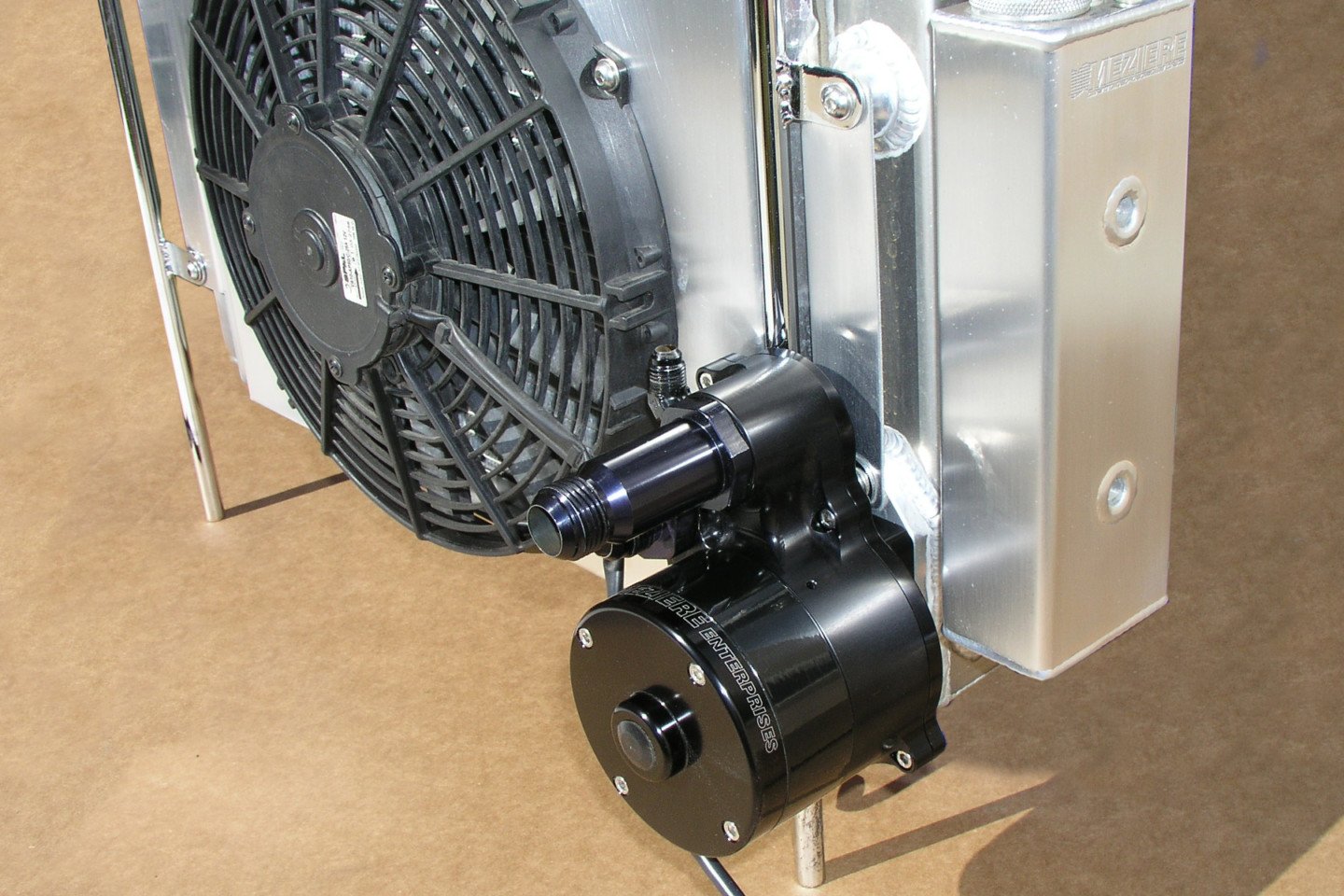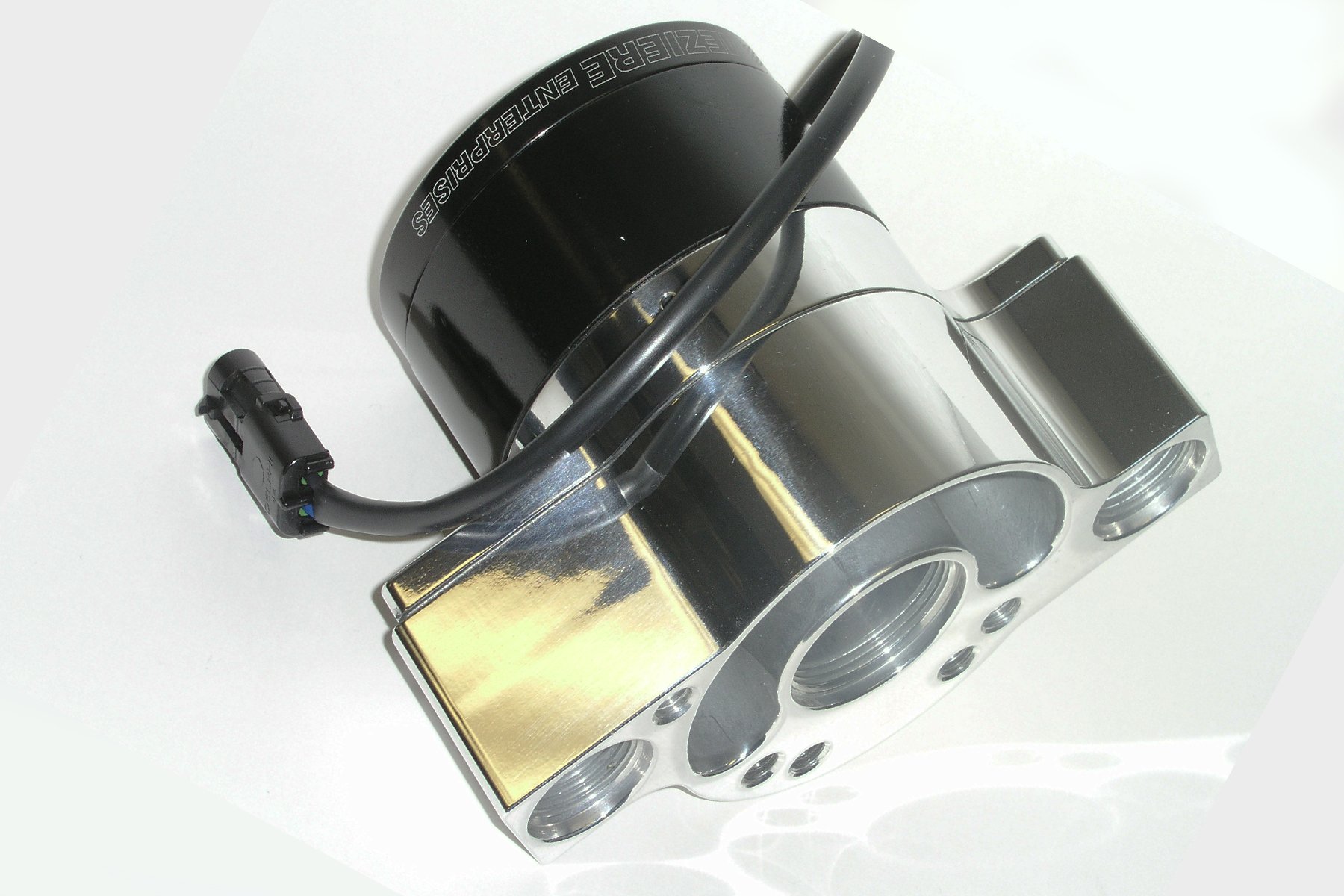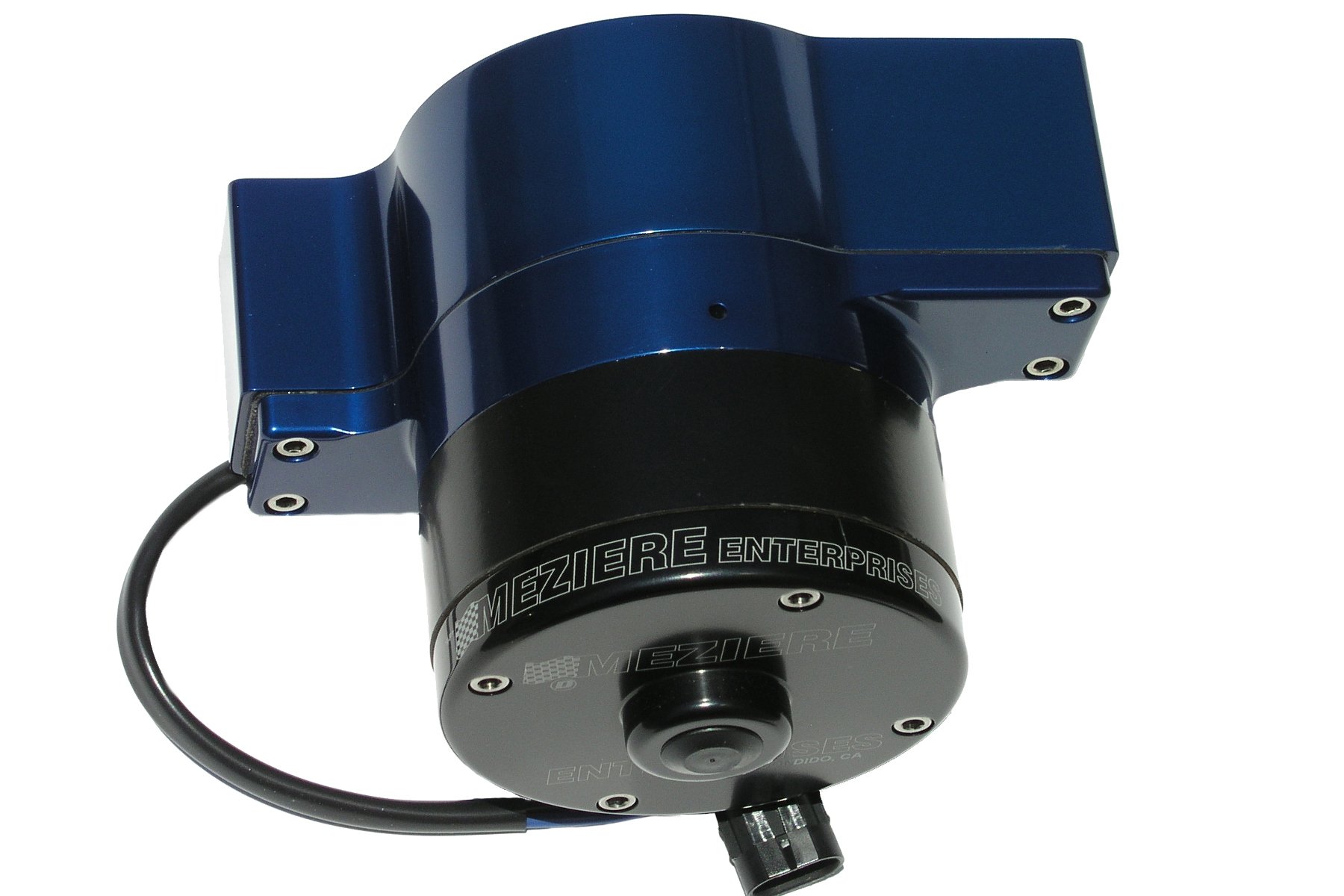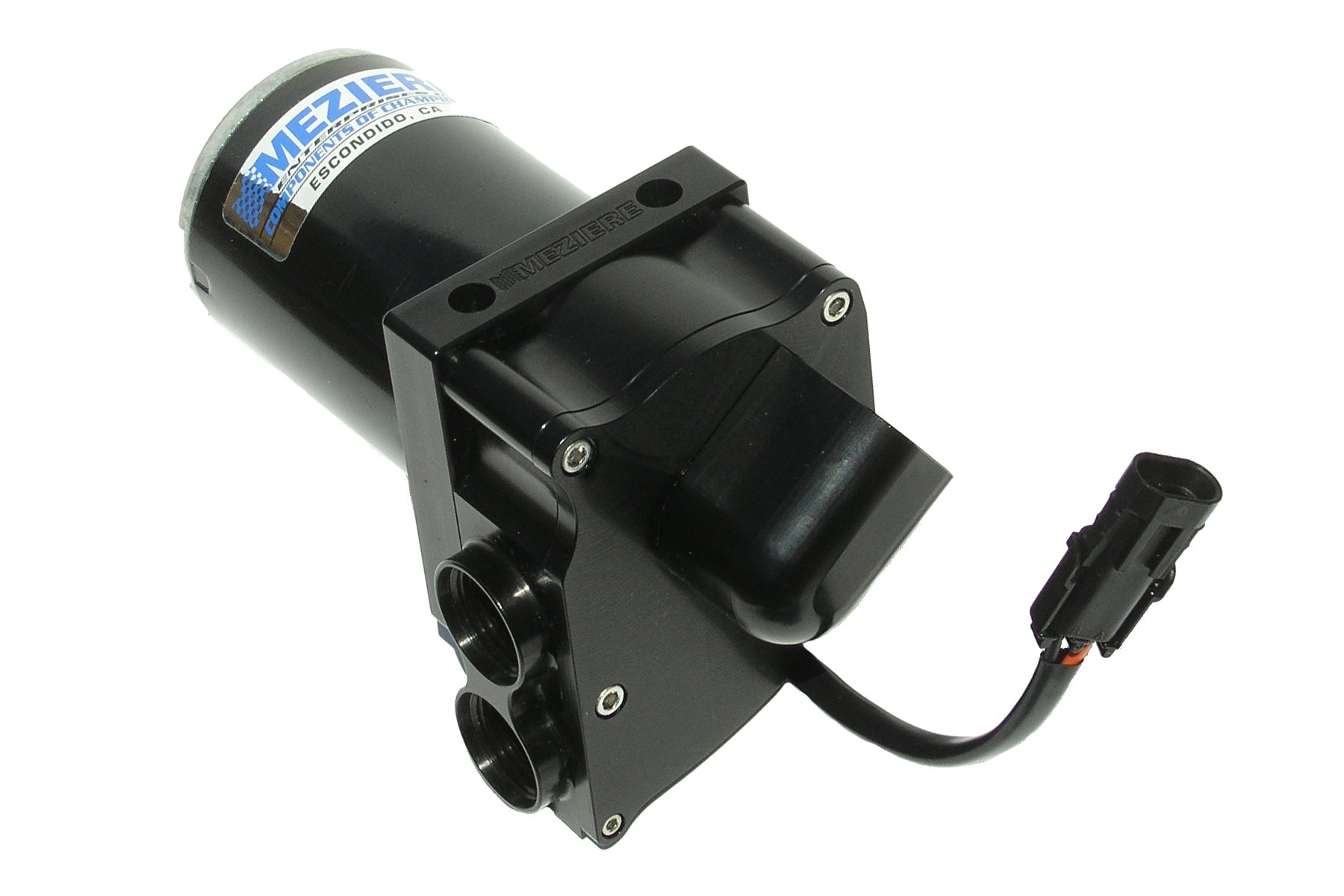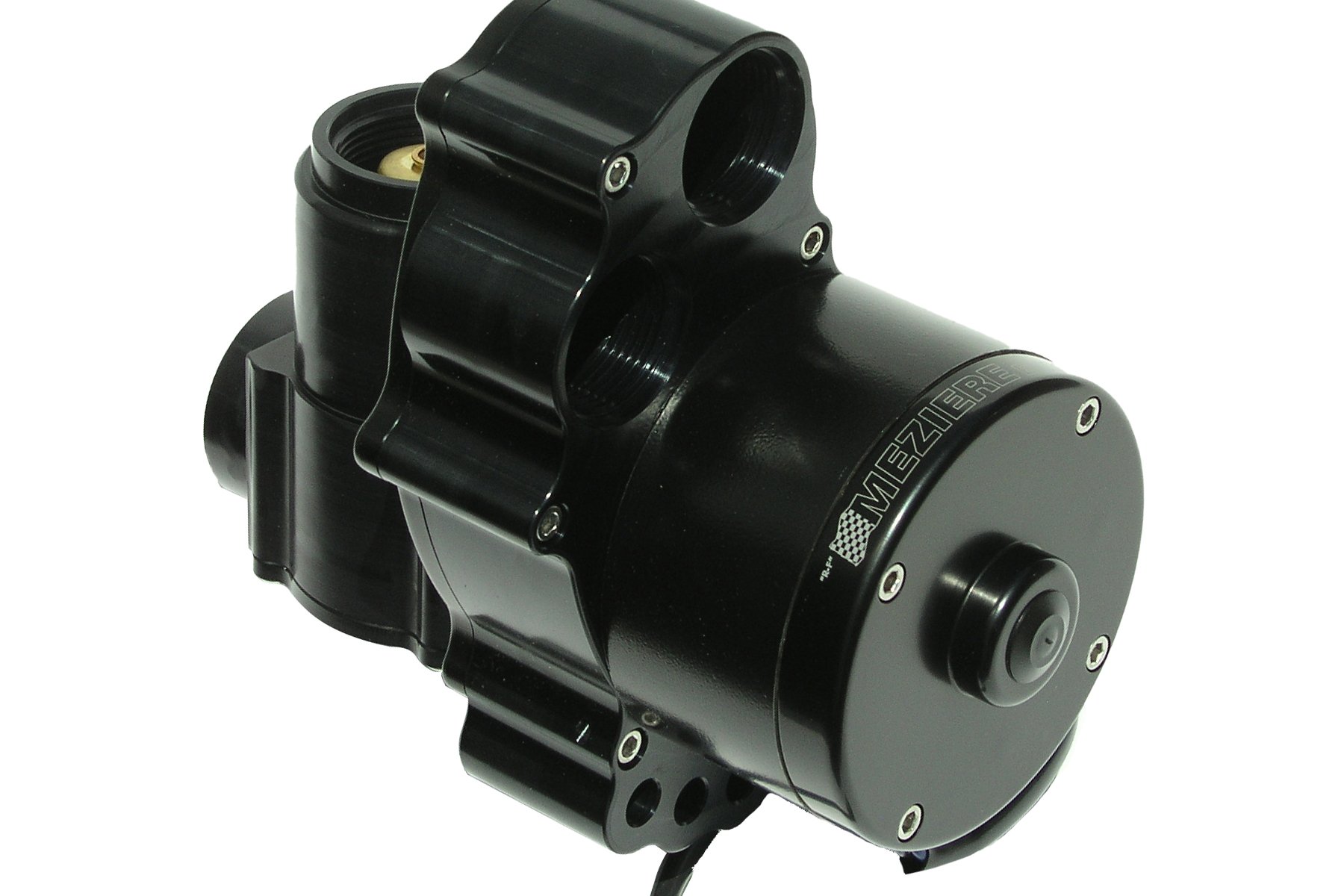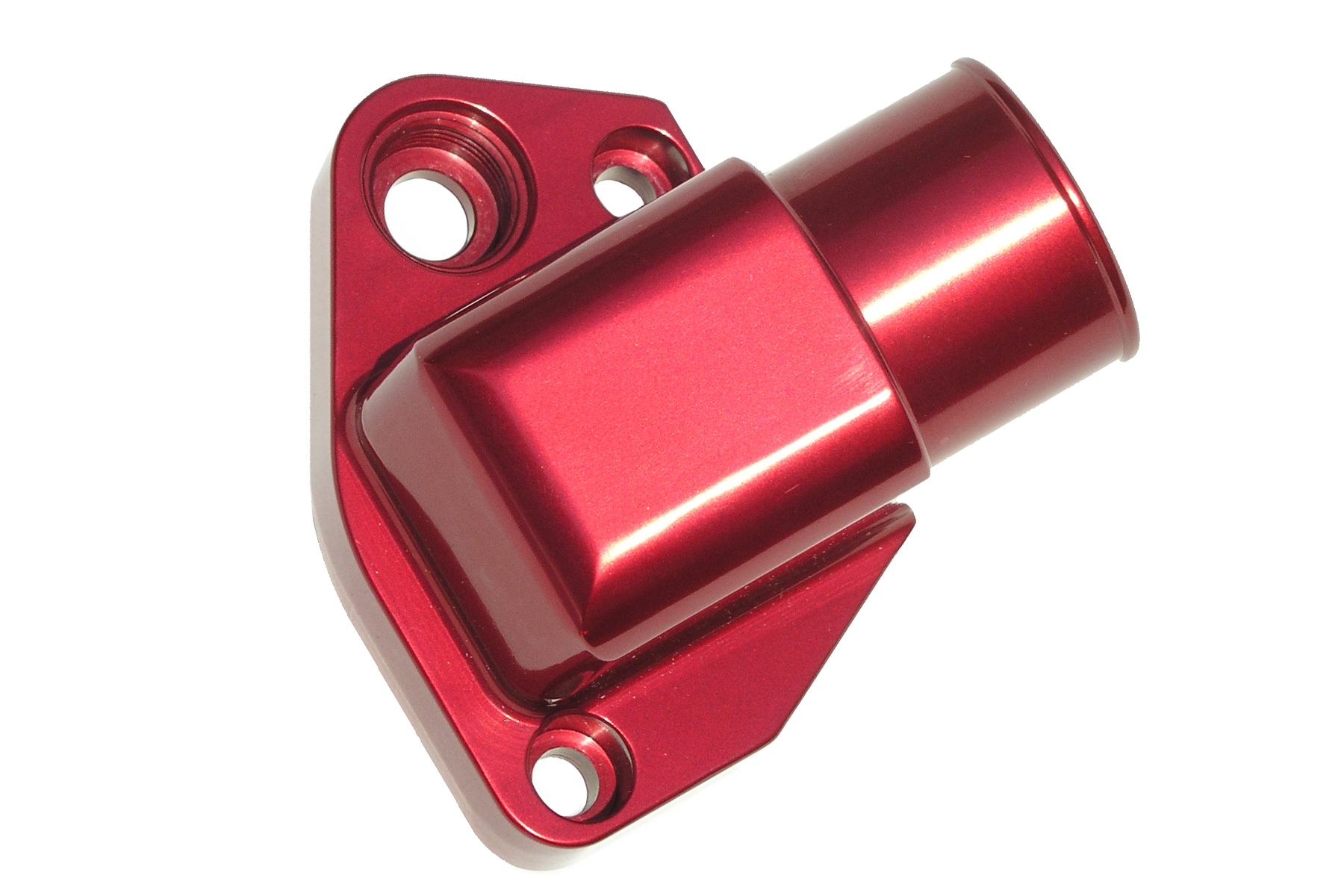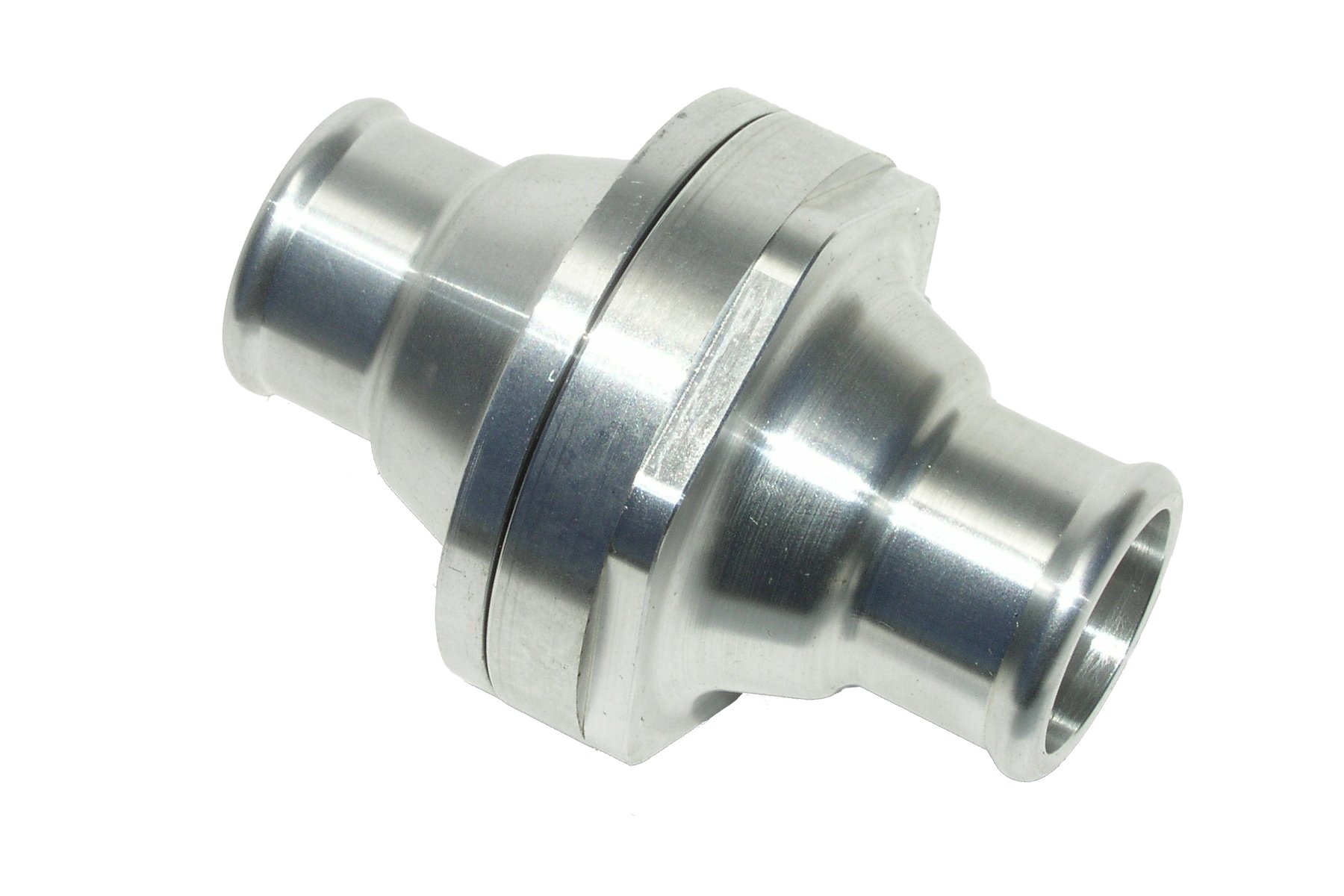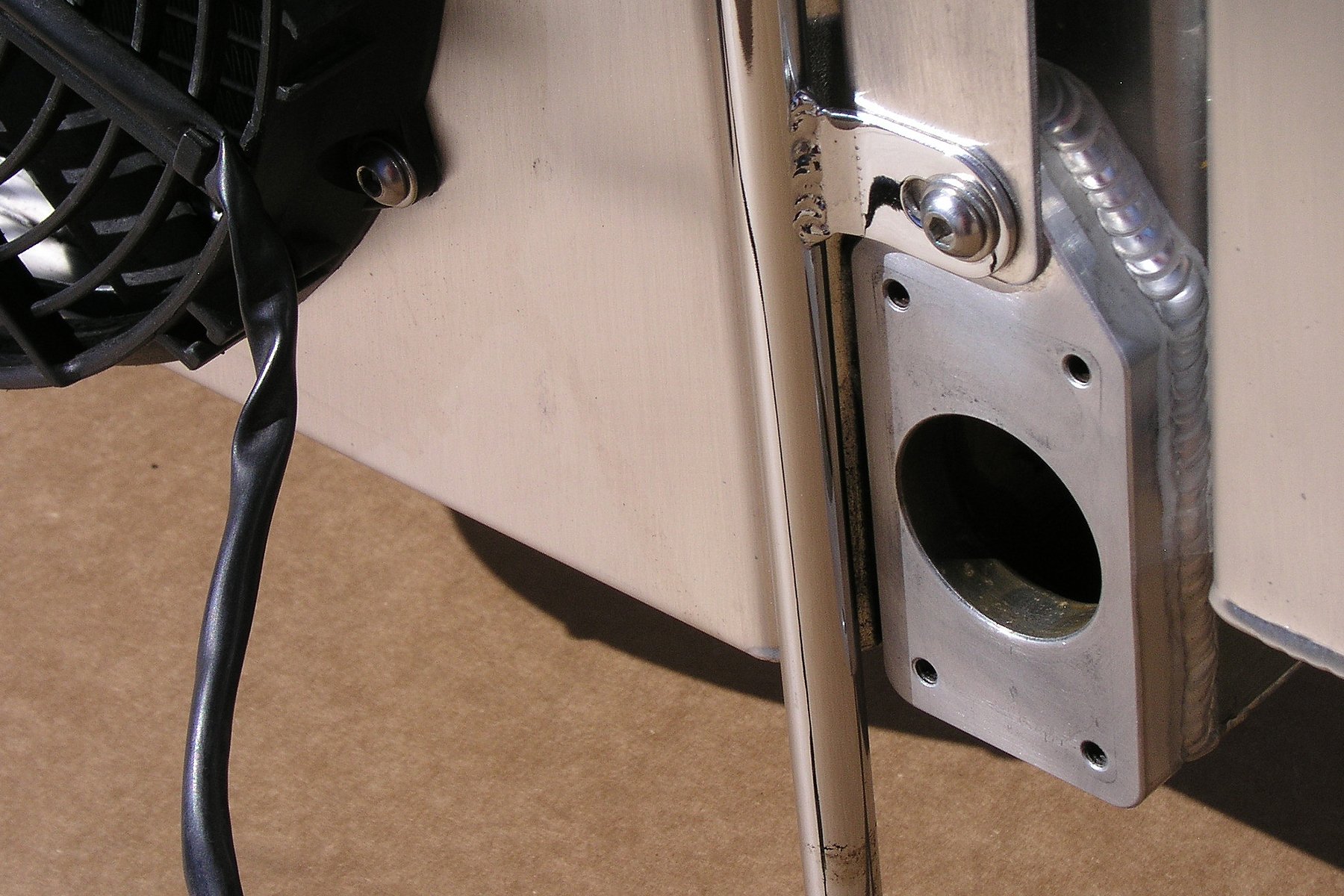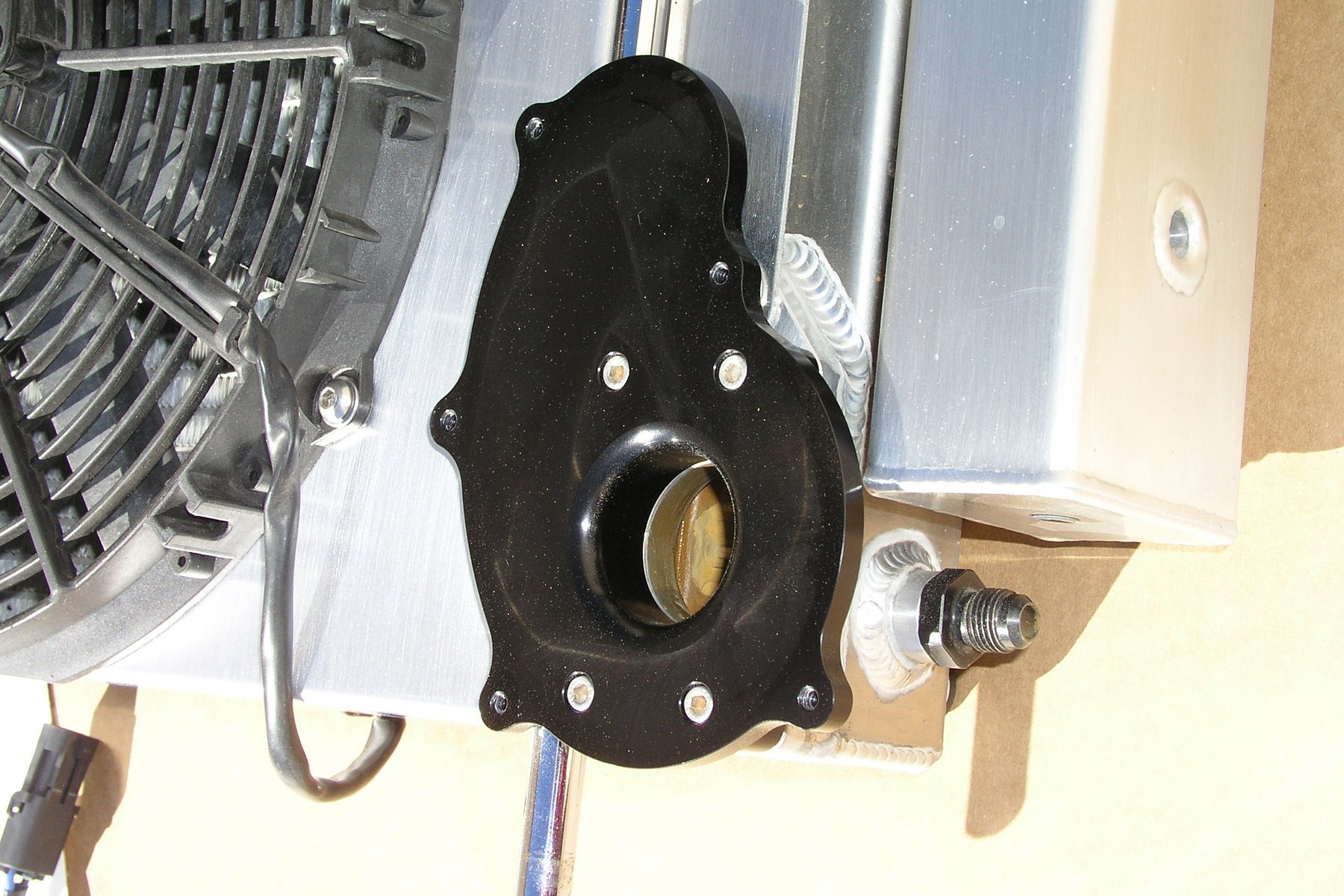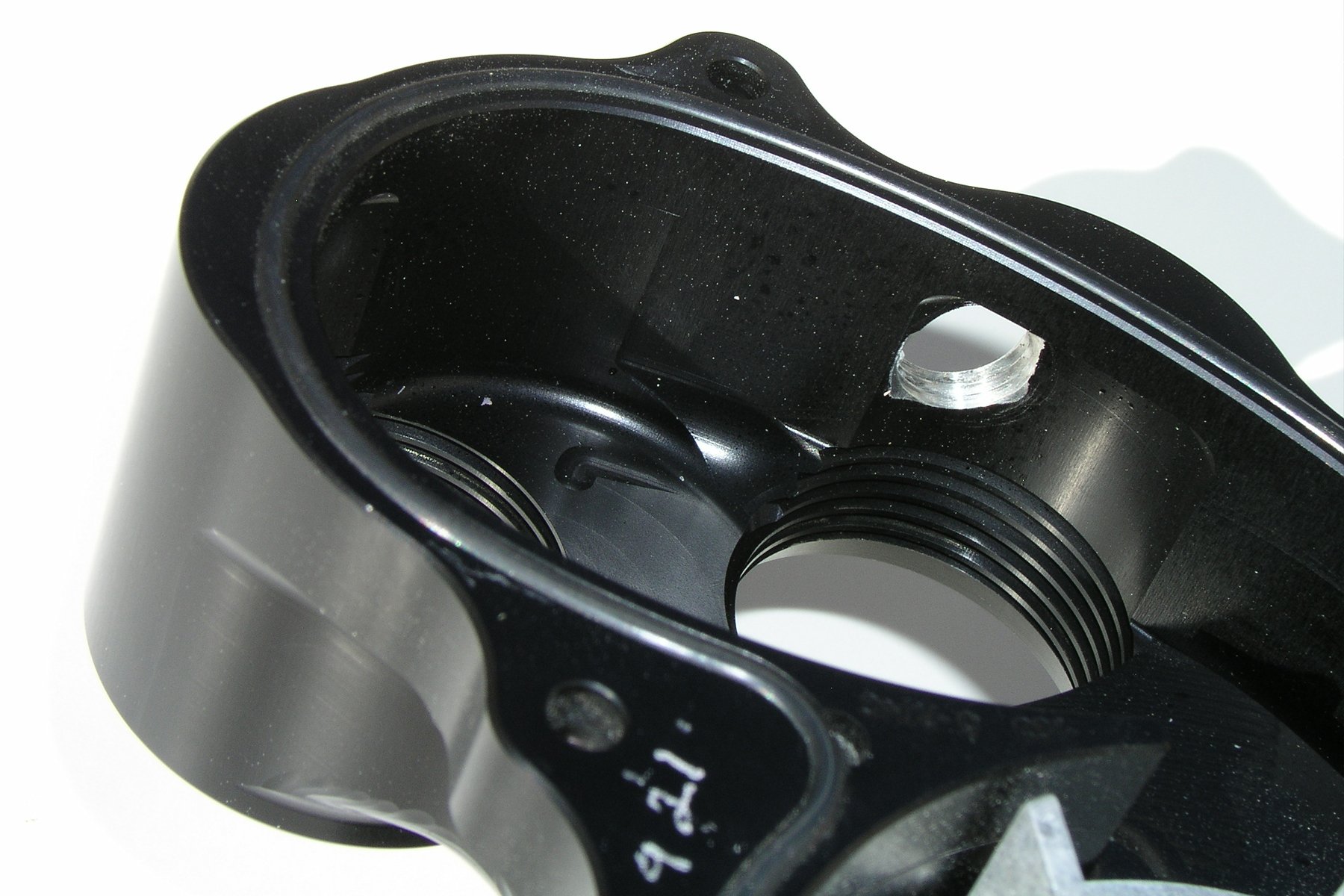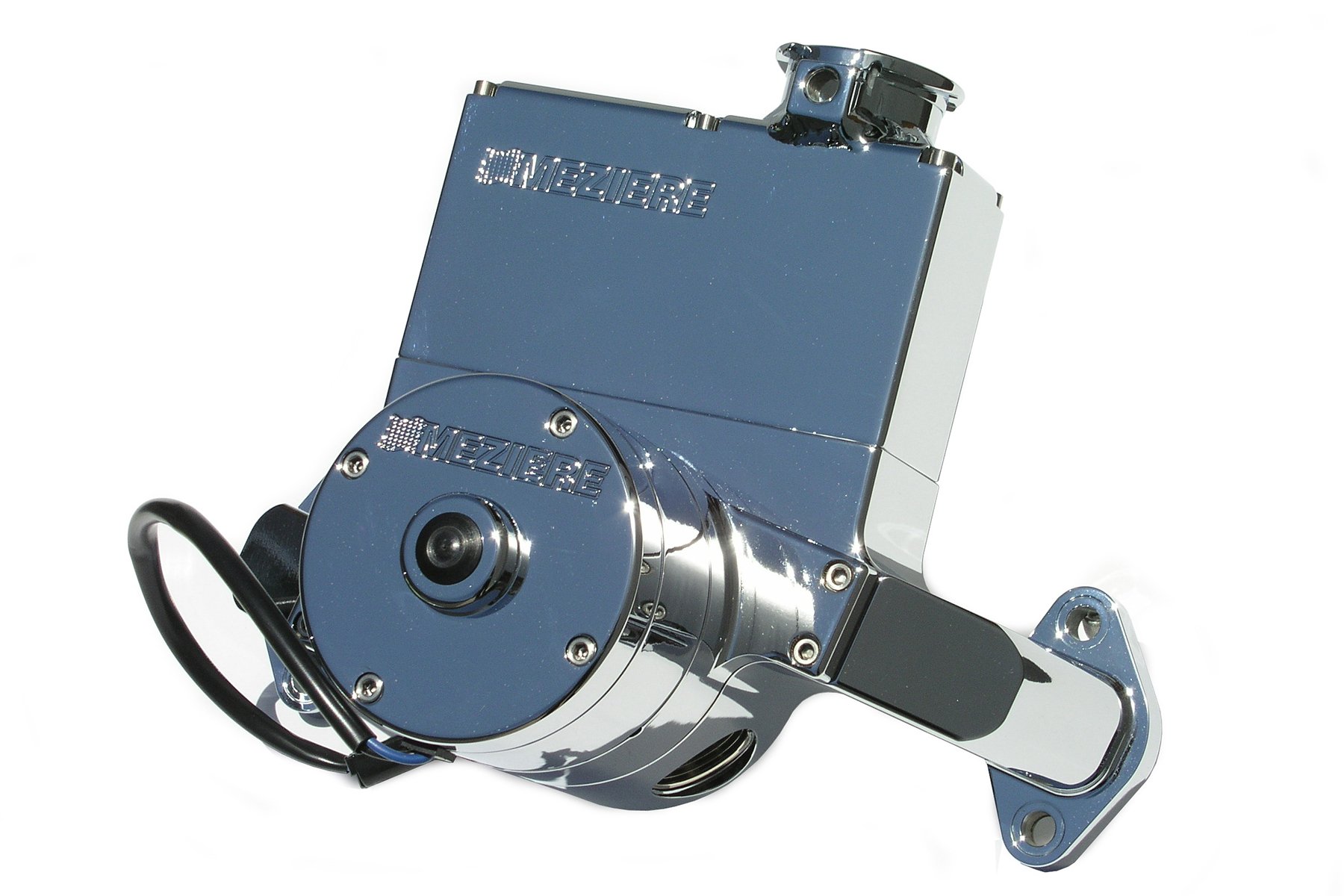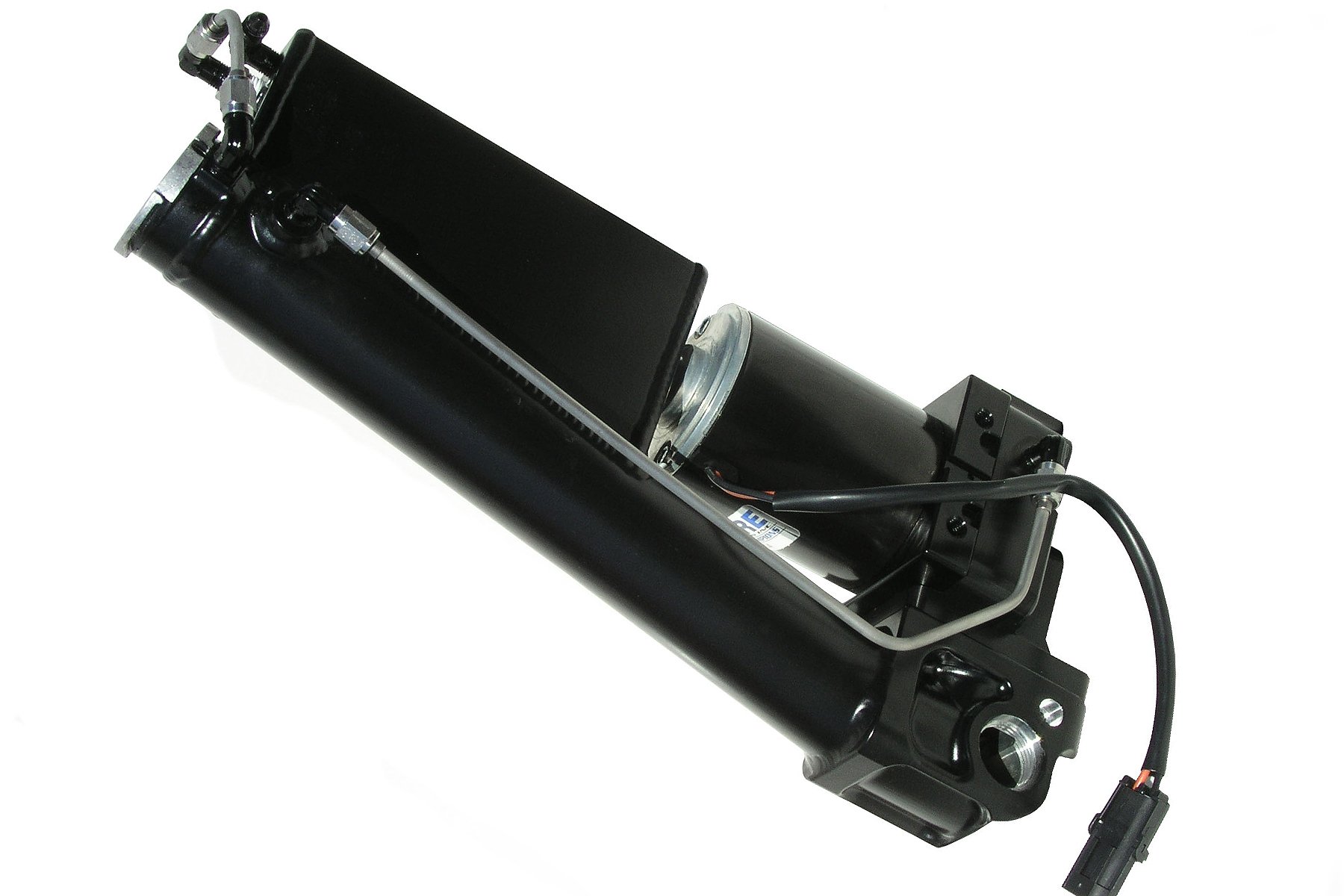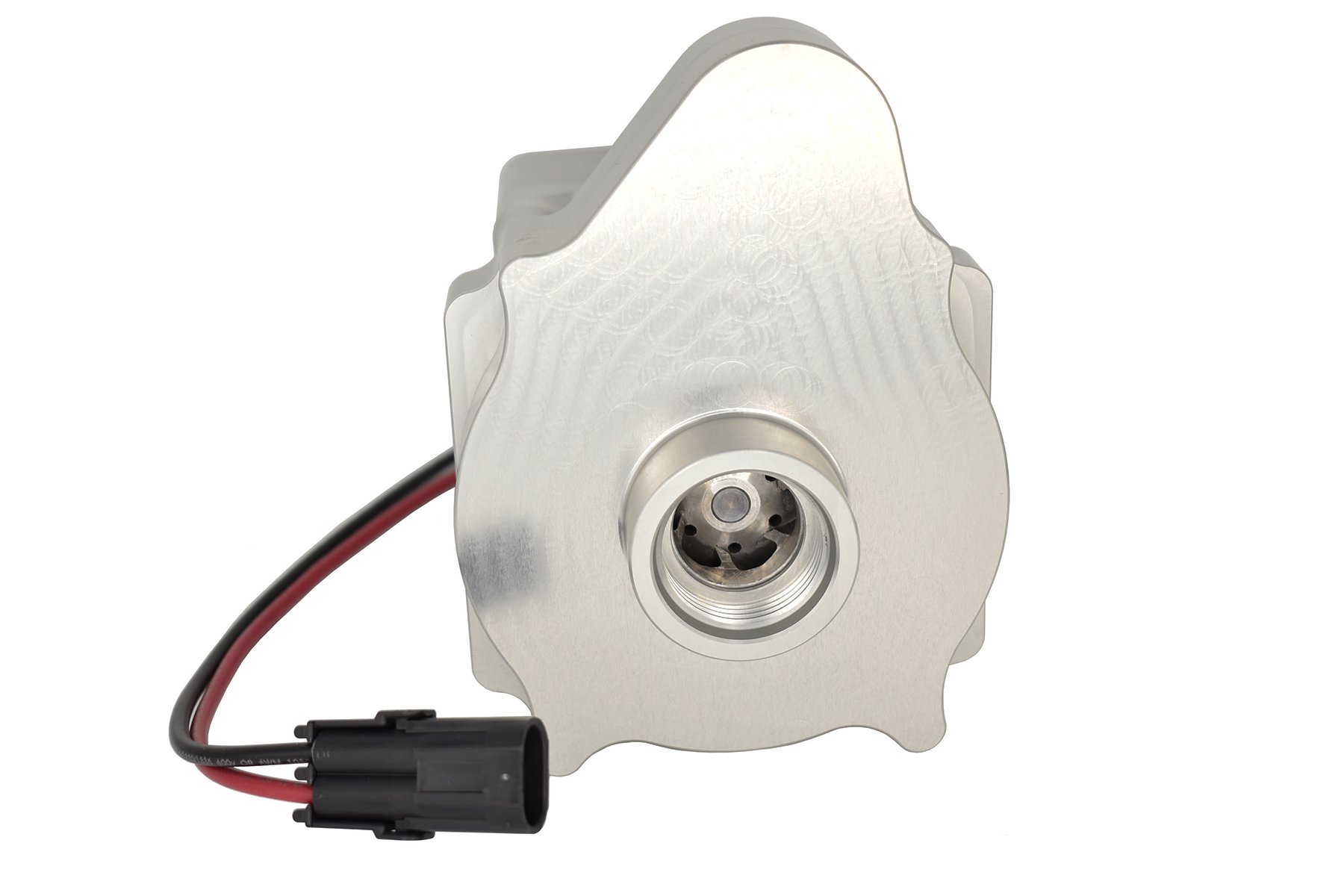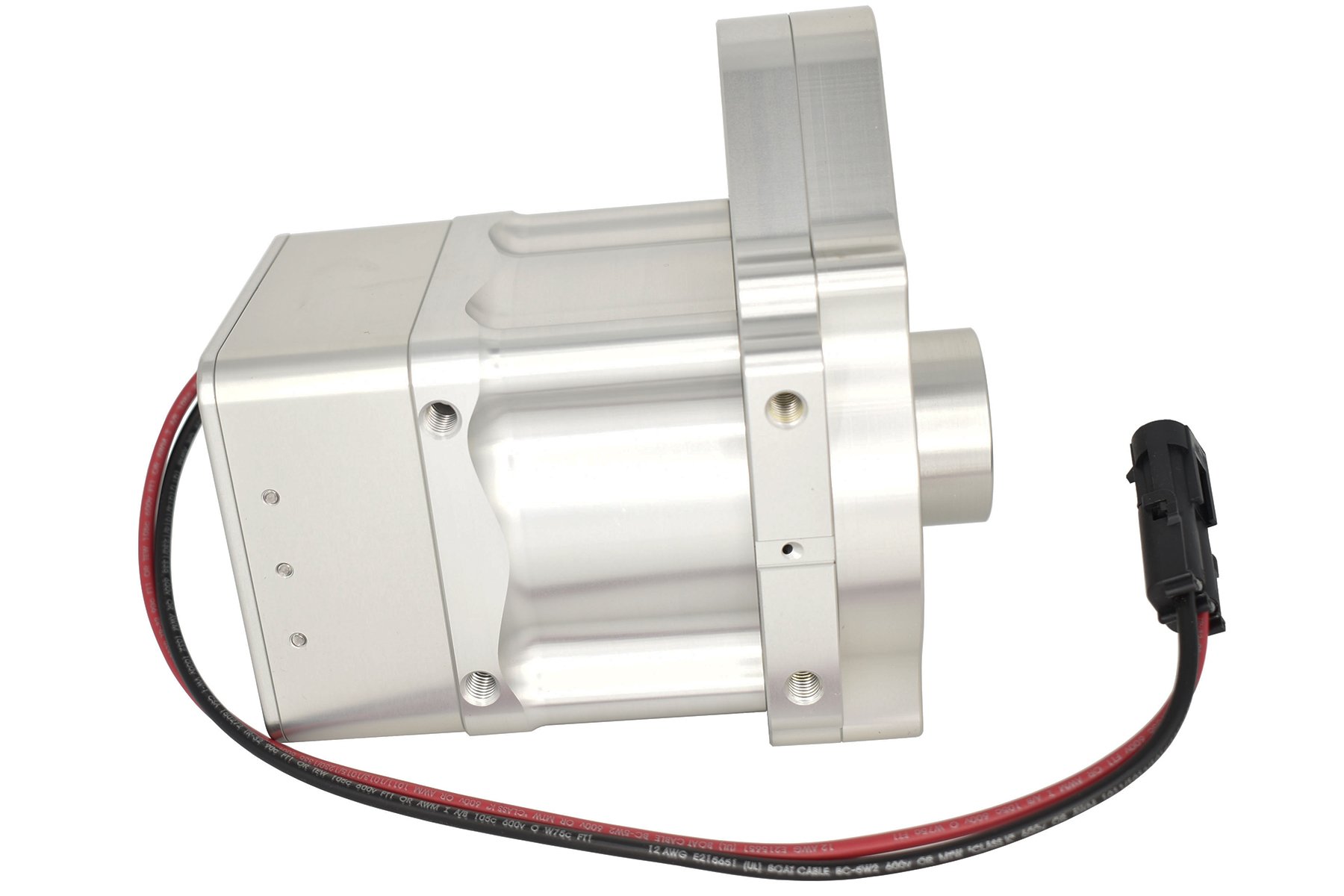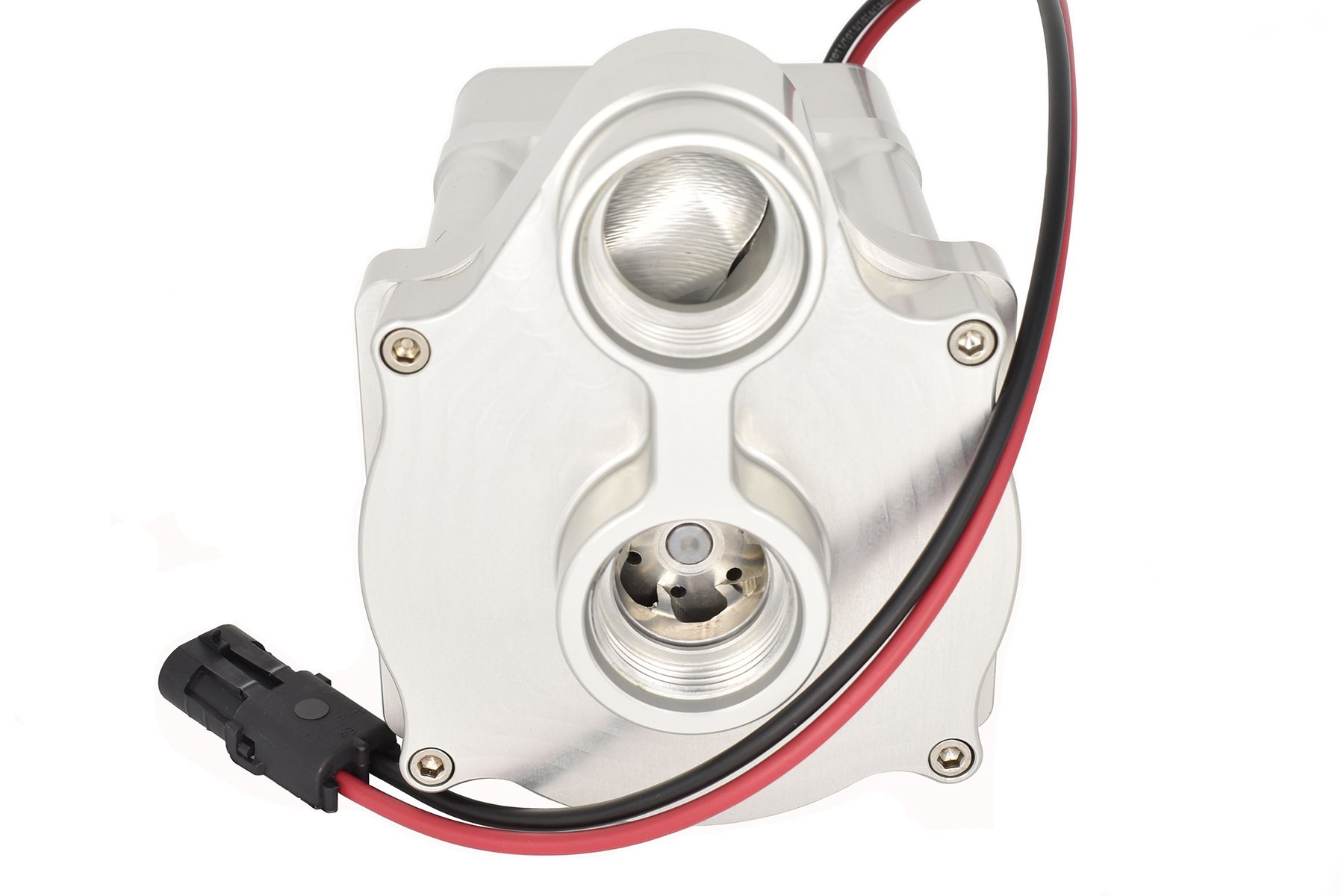The word “remote” has multiple meanings. Typically, the definition refers to adapting a process to operate from a distance, such as working from home or switching the channels on your television. There are also remote water pumps designed and created by Meziere Enterprises that can improve the cooling layout for your hot rod or race car.
The Meziere universal remote pump designs can be a lifesaver when engine-mounted pumps are not feasible and/or the space allotted for a traditional water pump is not available.
“A wide variety of people have come to us with these requests,” explains Don Meziere, one of the partners at Meziere Enterprises. “They range from the person who is just looking to complete a new tube chassis car to a recent customer who came to us with their new LS-powered Pantera project. These pumps provide a necessary flexibility.”
Meziere recollects that race cars from years ago were notorious for trying to fit a 10-pound cooling system into a 5-pound bag. Many dragsters and door cars were incorporating chassis designs that were a very tight fit to the engine and drivetrain.
“Chassis builders are more generous today, especially with the newer design rear engine dragsters,” Meziere says. “You will remember when we were racing in the ’90s, and things were getting so compact. Rear end mounting, driver’s compartments, and skinny framerails around the engine proved to make an effective cooling system troublesome. That is when our initial remote pump designs came about.”
The first of the Meziere remote pumps offered was a straightforward version of its proven 100 Series engine mount pumps. These feature a 1-inch NPT inlet port and dual -12AN exit ports replacing the block mount provisions. This first edition 42 gallons per minute (gpm) pump design also has a 55 gpm big brother with larger fittings.
One Pump Does Not Fit All
When you first give thought to a remote cooling pump, you may think by adding various inlet and outlet options, one design will fit the bill. The reality is that Meziere has continued to engineer new remote coolant pump options as hurdles have presented themselves.
“One of our early pump designs had the goal of offering a very compact footprint,” Meziere says. “This was our design for breaking into the sport compact market. Since those cars have lower horsepower ratings and engine displacements, it is an appropriate design. Racers, street performance, and exotic car applications have also readily used them with success.”
We now have many shapes and configurations of remote pumps. We would learn of various remote hurdles and tackle them. – Don Meziere, Meziere Enterprises
This WP136S remote pump is merely 7.25-inches tall and about 3.5-inches square. It weighs just 5.2-pounds and will pump 20 gpm with -12AN ports.
“Our first-generation pump had two exit ports, but we had many customers who wanted a single port,” Meziere says. “Some customers asked about capping one of the ports and calling it good enough. In response to that need, we engineered a new pump to create the best flow.”
Offered with various inlet and outlet configurations, these smaller remote pumps were first designed for the sport compact market; these small pumps have found their way into street rods and exotics. Recently, racers looking to get more cooling from their intercooler circuits have increased flow using these pumps.
Other generations of this remote pump are now offered with a pump housing utilizing a -12AN inlet and outlet port that can mate with a selection of -12AN, -10AN, and -8AN fittings, along with a 1- or 3/4-inch slip hose.
Thermostat Bypass Designs
The remote pumps by Meziere are currently offered across a dozen different overall designs. In addition to a variety of pump entry and exit port options and performance levels, there are part numbers incorporating a unique thermostat circuit.
“Upon engine startup, the bypass circuit pumps are designed to get a good signal of coolant to the thermostat itself,” Meziere conveys. “Typically, the OEM mechanical pump and bypass circuit are very close to the thermostat so it immediately reacts to the warming coolant temperature.”
There are Meziere remote pumps and billet thermostat housings that feed a bypass circuit of coolant directly to your thermostat. You can also provide any performance or racing engine with an inline thermostat housing to install in your upper radiator hose.
Meziere continues, “In a remote pump situation, the challenge is to get a good signal to the thermostat now distant from the engine. We do this with a separate feed of coolant from the top of the engine which provides that signal.”
Many people have the idea that thermostats help cool; that’s not really accurate. In a factory vehicle/engine, the thermostat circuit speeds the warmup cycle to raise the engine coolant temp quickly. This also makes your heater work sooner, as the engine gets up to temperature.
Although you may not be warming up your children on a cold morning within your racecar, quickly bringing an engine up to designed temperature is also tied into performance engine wear.
“It’s important not to run the engine too cold as it promotes cylinder wear,” says Meziere. “The thermostat circuit is going to be important if your engine tends to run too cool, for too long. How cool is too cool? When in doubt, ask your engine builder.”
Radiator Mounted Remote Pumps
Arguably the most popular remote pump designs are actually incorporated onto the radiator. Very applicable with doorslammers is the Meziere pump that mounts directly to the lower radiator tank/hose area.
These radiator-mounted pumps are a clean solution for a remote system. The pumps can be configured for almost any size fittings. This doorslammer example incorporates two -12AN lines to the engine block and a single -20AN line from the thermostat neck.
“We have worked with major motorsport radiator manufacturers like Ron Davis, Griffin, Saldana/Power Cool Systems, C&R, and more,” Meziere notes. “These pumps can be ordered with the mounting plate to modify your existing radiator, or the plate can be pre-welded into manufactured units.”
Meziere points out, “This is the pump and radiator mount configuration most of the professionally-built cars from Jerry Bickel, Jerry Haas, and RJ Race Cars use. These radiator-mounted cooling systems are clean and simple; it’s mounted, add two pressure feed lines, and you’re done.”
Though the standard remote and radiator mounted pumps weigh in at a mere 6- to 8-pounds, Meziere explains their engineers have designed versions for even the most weight-conscious racer. “We created a lightweight housing and went back to our smaller motor for two new pump options that shave a pound from our other pumps.”
The remote pumps are machined in-house with carefully engineered impeller vein designs for ultimate pumping efficiency without cavitation, while also offering a long and leak-free lifespan. All Meziere electric water pumps provide a 2,400 to 3,000-plus hour life expectancy.
New Dragster Pump and Reservoir Design
A newcomer to Meziere’s coolant product line is its Top Dragster Cooling System. This assembly is designed with the pump, expansion reservoir, fill neck, and recovery tank combined together. It is created using a similar principle as its top-rated reservoir electric pumps.
As you feed the inlet with a positive reserve of water above the impeller area, any air will travel up through the tank and come out of the radiator cap as you are filling it. This design is now incorporated into a lightweight remote dragster assembly with an expansion tank and angled fill neck that fits nicely behind the typical dragster seat and firewall.
The Meziere strategy of using an expansion tank as an opportunity to remove air within a cooling system. This proven design is now carried into its remote Top Dragster unit.
The First Remote Pumps
Drawing parallels back to its original block-mounted pumps, Meziere has continued to utilize its engineers to solve every application need. The very first remote pumps were designed as a version of its engine block-mounted pumps — the redesigned pump housing mates to hose fittings rather than the engine block.
“We now have many shapes and configurations of remote pumps. We would learn of various remote hurdles and tackle them,” Meziere offers. “We have approximately six different families of remote pumps, most with optional hose fitting configurations.”
Yet Another Innovation
Earlier, we noted the mini remote pumps had been incorporated into intercooler systems by many racers; Meziere has now taken that application and transformed it into dedicated intercooler pump designs.
With inline, bulkhead, or tank-mount designs, the brand new 700-series intercooler pumps are purposed for intercooler coolant circulation. They use brushless 12- and 24-volt motor technology, which allows variable speed control.
“Our new 700-series intercooler pumps are available in three different inlet/outlet configurations and use a brushless DC motor,” Meziere states. “These pumps are only 4.4-by 5.4- x 6.4-inches in size. The pump is sealed for ethylene glycol/water coolant and protected against harsh environments. The high-RPM brushless motor is extremely reliable and capable of higher flow rates and pressures.”
The new intercooler pump can control the flow with simple on/off controls, two-speed high/low switching, or configured to communicate with the latest CAN technology for full variable speed and condition monitoring.
Performance and racing engine cooling is a science all of its own. Looking at the various shapes and sizes of electric and mechanical pumps from Meziere, its subscribes to the theory that one size does not fit all.
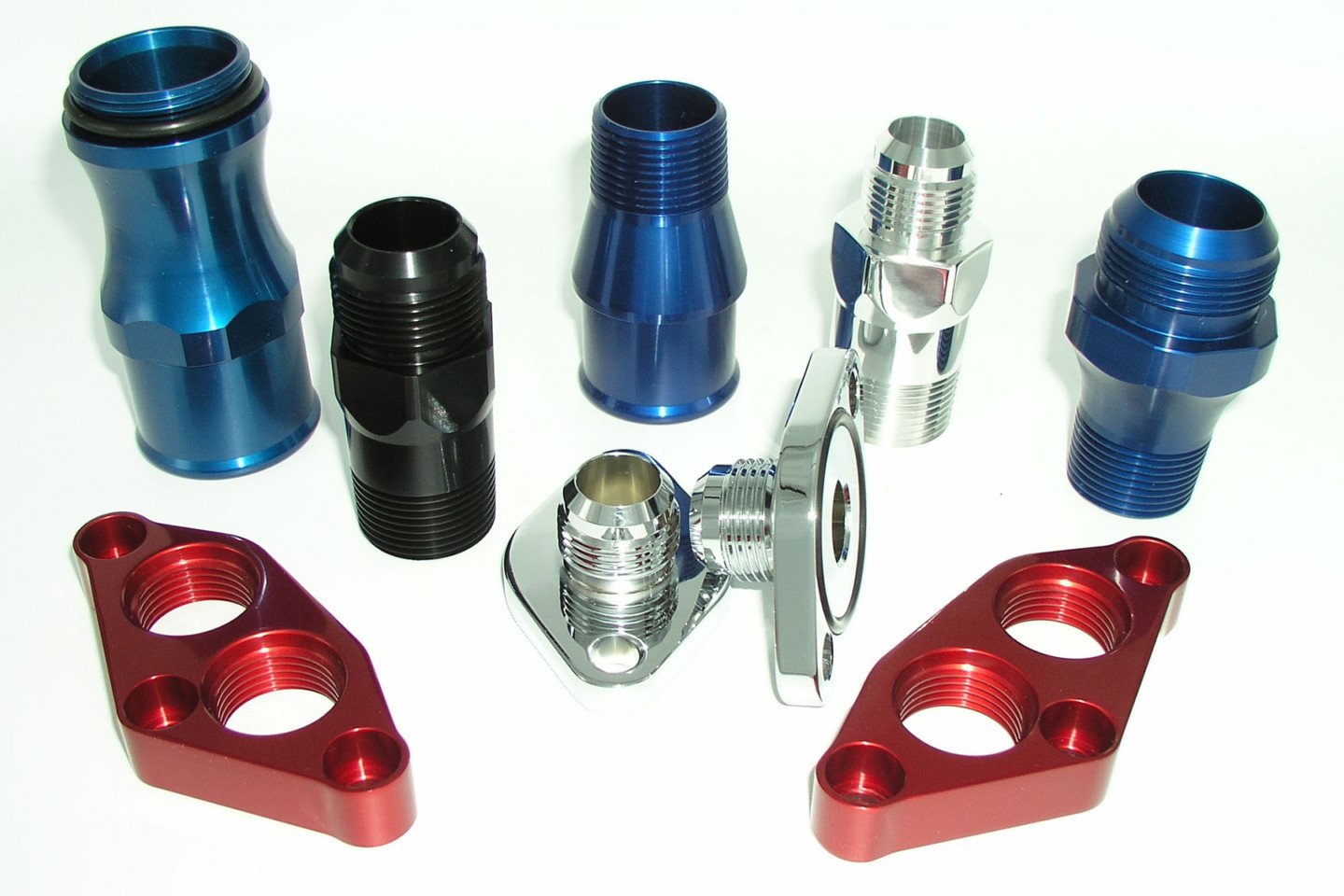
A wealth of AN-fittings manufactured by Meziere include -12, -10, and -8AN adapters along with 1- or 3/4-inch slip hose fittings. Meziere notes that fitting size can significantly affect the system’s overall flow rate. “Restriction in your plumbing, especially on the inlet side, can really reduce flow in the whole system,” Don Meziere states.
While some different pump models may look similar on the outside, subtle internal alterations in the impeller and pump cavity often make dramatic and powerful differences in flow characteristics. This re-engineering makes each unit operate at peak efficiency with less cavitation.
A manufacturer could easily change the configuration of either a remote or block-mounted pump by adding, subtracting, or capping multiple ports. Instead, Meziere engineers each application with unique, dedicated designs so you end up with the most efficient pump possible.
The exacting designs are not just limited to its pumps; to visit Meziere’s website’s cooling system accessories page is to view hundreds of individual adapters, mounting plates, fittings, and housings. This wealth of component options creates a perfected “structure” of your overall cooling system.
An old racer’s philosophy says, “If the product package reads that one size fits all, this usually means that it fits nothing very well.” It is safe to say that the same goes for a cooling system.

